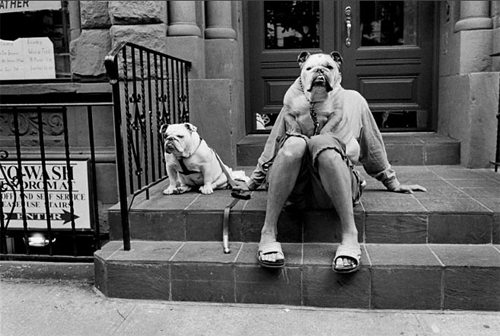The Basic Principles Of Street Photographers
Table of ContentsAbout Street PhotographersGetting The Street Photographers To WorkSome Known Details About Street Photographers 9 Simple Techniques For Street PhotographersFascination About Street Photographers
Street photographers do not always have a social purpose in mind, yet they like to isolate and capture moments which might or else go unnoticed.He was influenced by many of those that affected the street professional photographers of the 1950s and '60s, he was not mainly interested in recording the spirit of the street., that functioned side by side with professional photographers attempting to capture the essence of city life.
Due to the fact that of the comparatively primitive modern technology available to him and the lengthy direct exposure time called for, he struggled to catch the stress of the Paris streets. He trying out a collection of photographic approaches, attempting to locate one that would certainly allow him to catch motion without a blur, and he discovered some success with the calotype, patented in 1841 by William Henry Fox Talbot. Unlike Atget, photographer Charles Marville was worked with by the city of Paris to produce an encyclopaedic record of Haussmann's city preparation project as it unravelled, hence old and new Paris. While the digital photographers' subject was basically the exact same, the results were markedly different, demonstrating the influence of the photographer's bent on the character of the photos he created.
Provided the great high quality of his photographs and the breadth of product, architects and musicians commonly bought Atget's prints to use as recommendation for their very own job, though industrial passions were barely his major motivation. Instead, he was driven to photograph every last residue of the Paris he enjoyed. The mingled passion and urgency of his objective luster through, causing pictures that tell his own experience of the city, top qualities that anticipated road photography of the 20th century.
The smart Trick of Street Photographers That Nobody is Discussing
They reveal the city through his eyes. His job and fundamental understanding of digital photography as an art kind functioned as inspiration to generations of professional photographers that followed. The next generation of road digital photographers, though they likely did not describe themselves thus, was introduced by the photojournalism of Hungarian-born photographer Andr Kertsz.
Unlike his peers, Brassa made use of a larger-format Voigtlnder cam with a longer direct exposure time, requiring him to be a lot more computed and thoughtful in his method than he may have been if utilizing a Leica. (It is believed that he might not have actually been able to afford a Leica during that time, however he did, however, utilize one in the late 1950s to take colour photographs.) Brassa's pictures of the Paris underworld lit up by artificial light were a discovery, and the collection of the series that he published, (1933 ), was a major success.
Cartier-Bresson was a champ of the Leica camera and among the very first digital photographers to maximize its capabilities. The Leica permitted the professional photographer to connect with the environments and to record moments as they took place. Its reasonably small size likewise aided the photographer fade into the history, which was Cartier-Bresson's recommended strategy.
The 30-Second Trick For Street Photographers
It is as a result of this basic understanding of the art of photo taking that he is often credited with discovering the medium around once more roughly a century given that its invention. He took pictures for greater than a half century and influenced generations of digital photographers to trust their eye and intuition in the moment.
These are the inquiries I shall try to answer: And after that I'll leave you with my own interpretation of road photography. Yes, we do. Let's begin with specifying what useful site a meaning is: According to (Street Photographers) it is: "The act of defining, or of making something definite, distinct, or clear"
No, most definitely not. The term is both restricting and deceiving. Seems like a road photography should be images of a roads appropriate?! And all street digital photographers, except for a tiny number of outright newbies, will totally value that a street description is not the vital part to street photography, and really if it's a photo of a road with possibly a few uninteresting individuals not doing anything of interest, that's not road photography that's a picture of a street.
All About Street Photographers
He makes a valid point don't you think? Nevertheless, while I concur with him I'm not certain "candid public photography" will catch on (although I do sort of like the term "candid photography") due to the fact that "road photography" has been around for a very long time, click for more with many masters' names connected to it, so I think the term is here to remain.
You can fire at the beach, at a festival, in an alley, in a park, in a piazza, in a cafe, at a gallery or art gallery, in a city terminal, at an event, on a bridge, under a bridge ...
Yes, I'm afraid we scared no choice! Without guidelines we can not have an interpretation, and without a definition we do not have a style, and without a category we don't have anything to define what we do, and so we are stuck in a "policies definition style" loophole!
What Does Street Photographers Do?
